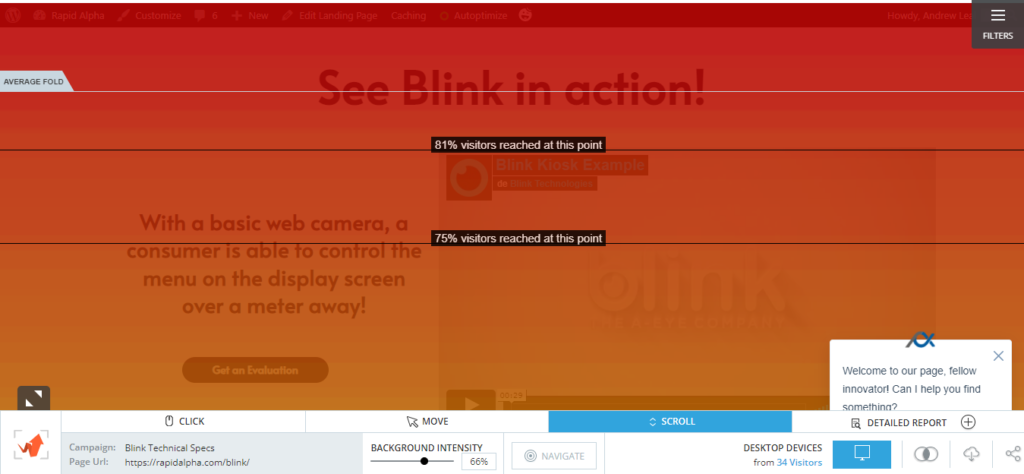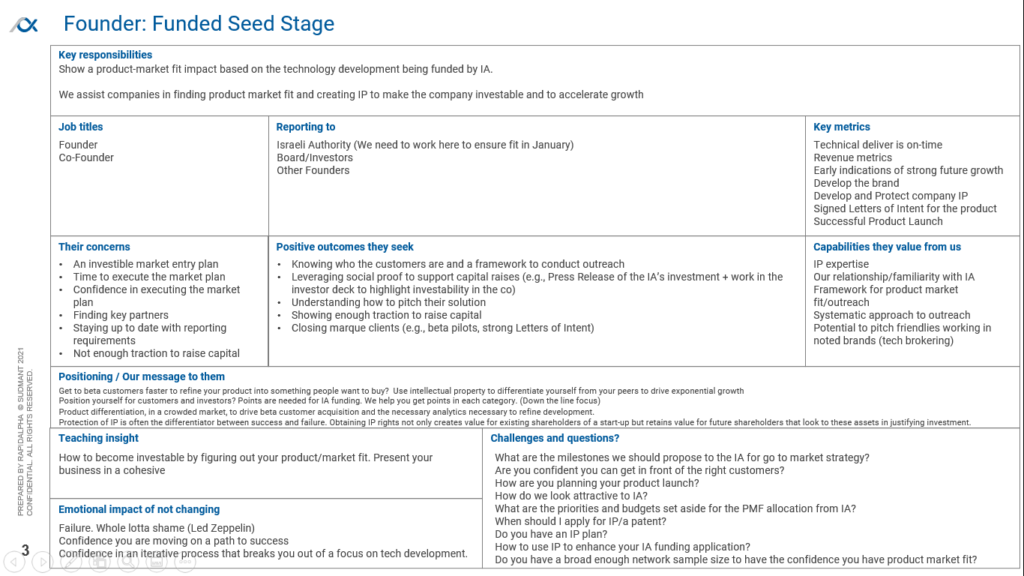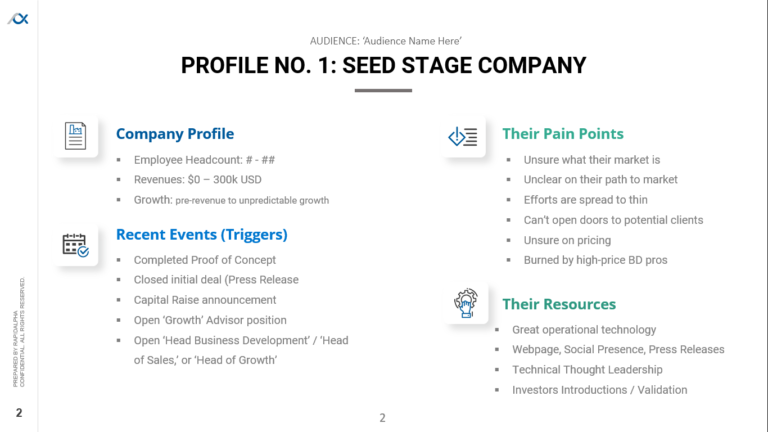Authors: Matthew Wahlrab and Craig Rochester
For founders who’ve developed a groundbreaking idea or technology, the next major challenge is successfully bringing the concept to the market. When seeking guidance on how and where to start, however, they’re pretty often met with vague, non-practical responses:
“You need to find your product-market fit.”
Sure, you think. I’ve heard that one a lot. But how?
“Make sure your approach is scalable.”
Again, heard it before. But how can I actually make that happen?
This vagueness and impracticality aren’t what founders need. What they do need are concrete approaches to facing these challenges, in practical detail. That’s the reason for this article series: sharing the step-by-step approach we use at Rapid Alpha to take founders from groundbreaking idea to successful market entry.
Taking startups from idea to market launch: Our 12-stage model

Phase 1
Value Canvas
Identifying the pain points your technical solution solves
Market Entry Report
Identifying prospective industries experiencing pain points your solution solves and charting a viable path to market
Micro Ad Testing
Validating your understanding of your prospects’ pain points and motivation to buy

Phase 2
● Account-Based Marketing
● Sales Collateral
● Social Media
● Ad Generation
Phase 3
● Sales Outreach
● Web Page
● Branding
● Search Engine Optimization
Exploring Phase 1 in detail

Value Canvas
To market your product, you need to be able to clearly articulate the problems it’s designed to solve for users. In other words, which pain point(s) was it that first motivated you to invent this product or solution? Who is feeling this pain? What is the magnitude of this pain? Will the solution be game-changing across every responsibility for the person feeling the pain, or nice to have for a single role that this person performs? What aspects of your novel technology set it apart from existing solutions?
Answering these questions pinpoints your invention’s technical differentiation and enables you to clearly communicate its benefits for future users. These problem-and-solution pairings will populate the two components of your Value Canvas: your Value Proposition and Customer Profile.
Value Proposition: A detailed breakdown of your product’s functions and differentiators, the pain points it solves, and the added-value gains it simultaneously provides for users.

Customer Profile: Your prospects’ roles and responsibilities, the related pain points your product can solve for them, and the added-value gains it provides them in parallel.

Market Entry Report
Once you’ve identified the pain point(s) that your product solves, next comes validating who experiences these problems, how, where, and when. Finding these answers leads you to your target market.
- Identify promising sectors and industries
Based on the stand-out technical aspects of your solution that you clarified at the Value Canvas stage, locate which industries are (likely to be) experiencing the pain point your solution can solve.
Blending market information like industry growth rates, listing incumbent players and their strengths, technology being adopted, and changes in attitude within industry and society can unlock compelling and previously unthought-of market opportunities. Thinking like a big company early on will help you become a large and impactful enterprise in your near-term future.
- Start segmenting your market
From identifying an entire industry your product can benefit, you need to unpack this profile to segment out the actual companies and roles for which those pain points are most relevant.
There are two main ways we help founders to segment their potential market (which can be done in parallel):
By industry role: Who in what job needs to hear about your product and how it can transform their work?
By company size: From multinationals to small entities, who is going to be most interested in your product, its format, and its utility? Bear in mind that many multinationals work enthusiastically with startups, offering well-funded pilots and potential investors to access innovative technology for their own clients.This diligent research gains you the knowledge needed to prioritize your outreach efforts. With these insights, your first attempts to let potential adopters know about your solution won’t be shots in the dark, but instead more likely to lead to eventual sales, collaborations, etc.
- Strategize your outreach (aka talk to some humans)
Companies don’t make purchase decisions; the people inside them do. It’s vital to start discussing your solution with people actually encountering the pain points it solves.
During your outreach, you are looking to confirm your understanding of the problem matches the experience of your potential clients? Do they need the solution you’re offering, in the format you’re offering it? What language do they use to describe their needs and ideal solutions — and is this the wording you’re using? Gaining this feedback is vital to crafting relevant, resonant outreach material and pitches going forward.
Micro Ad Testing
By this stage, you’ve gained detailed insights into how your target users perceive the pain point your solution solves through one-on-one conversations. Now, we come to validating these insights at scale via micro ad testing.
Micro ad testing allows us to explore which color schemes and wording resonate best with your target audience. This will eventually help you build a strategic account-based marketing (ABM) campaign to market your solution (more on this in our Phase 2 article).
Landing Page
What should prospects see on your landing page?
You’ll want to populate the page with content responding to the thoughts and feelings that motivated prospects to click your initial ad; words and images that speak to the pain points they have in mind, explain how your solution can solve them, and share how prospects can access more information.
It’s critical that you have a clear call to action. Something like the following is ideal:
Need support building a landing page that converts?
Click here to join our newsletter for cost-effective strategies that will get you to market fast, and won’t take months to deploy.
Need support building a landing page that converts?
Click here to join our newsletter for cost-effective strategies that will get you to market fast, and won’t take months to deploy.
What can landing page behavioral analytics tell you?
As the follow-up to your micro ad tracking, setting up analytics for your landing page enables you to gauge prospects’ motivations for looking into your product and their response to how you’re presenting it.
Using software such as TruConversion can show you how viewers scroll through, hover and click on, and exit your page. This helps pinpoint which imagery, wording, and recognition of their pain points resonate most with your potential buyers. Likewise, it helps highlight which components of your page lose their interest. These are vital insights to shape your ABM, sales, social presence, and advertising in Phase 2 of your go to market strategy, as well as your branding, web page refinement, and SEO inPhase 3.
Phase 1 round-up: How do the insights you’ve gained also appeal to investors?
Innovative technologies and solutions often have multiple potential markets or industry verticals where
the solution might be adopted. Founders rightfully struggle to decide which are the smartest to pursue, especially when they have little empirical data to rely on (for example, no data from micro ad testing). Similarly, investors are primarily concerned with maximizing their investment based on their risk profile. Investors usually like to see that startups are focusing on specific verticals and use cases, since few startups ever have the staffing or financial resources to build multiple markets simultaneously. As a result, investors favor founders who have put time into validating their most promising markets.
Startups do need to take calculated risk and experiment to find their ultimate product market fit. However, having your Phase 1 industry landscape research, segmentation, and ad testing / landing page analytics to back you up can:
✓ Guide you more rapidly toward prospects with the most motivation to buy your product.
✓ Hugely strengthen your investor pitch, differentiating yourself from the majority of startups via your diligent, data-driven approach.
Rapid Alpha partners that have exited in 2021 sold for over $2BB USD. To learn some of the techniques RA Partners are using to win their markets, join our Go to Market newsletter today.

Enter your details here and we’ll send follow-up reading on Phases 2 and 3 of the Rapid Alpha go to market model to your inbox. For practical insights guiding founders toward market success, faster.


